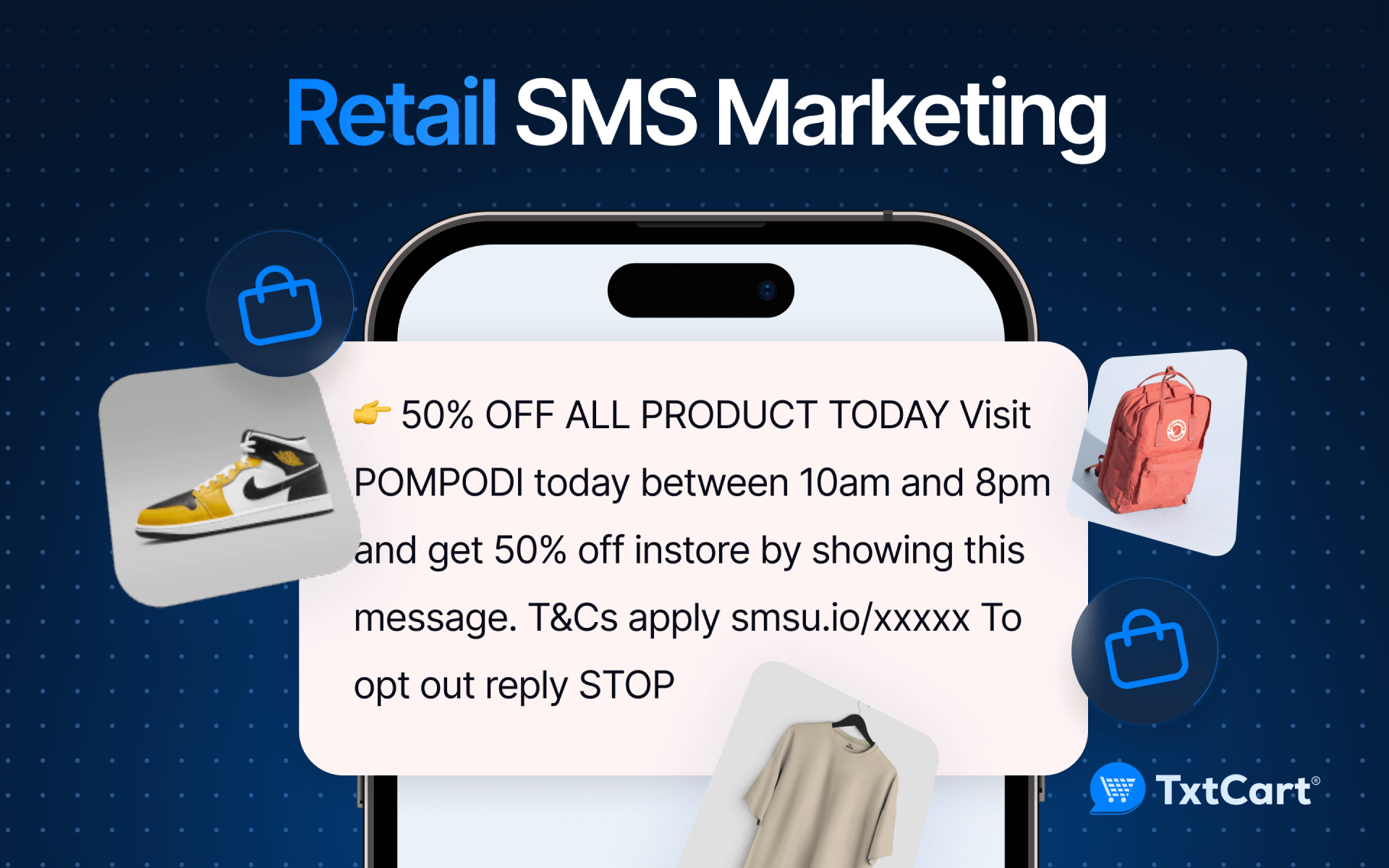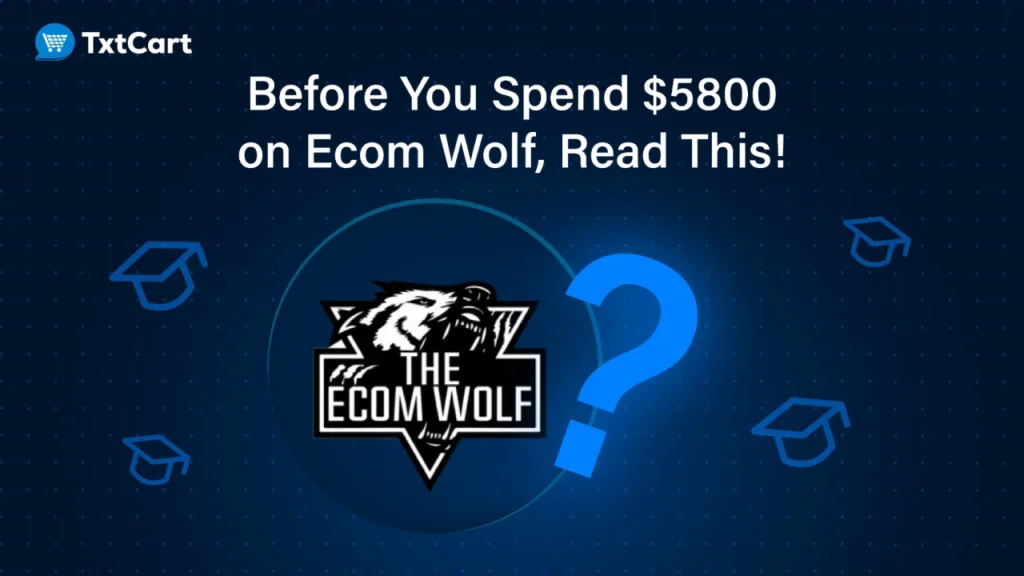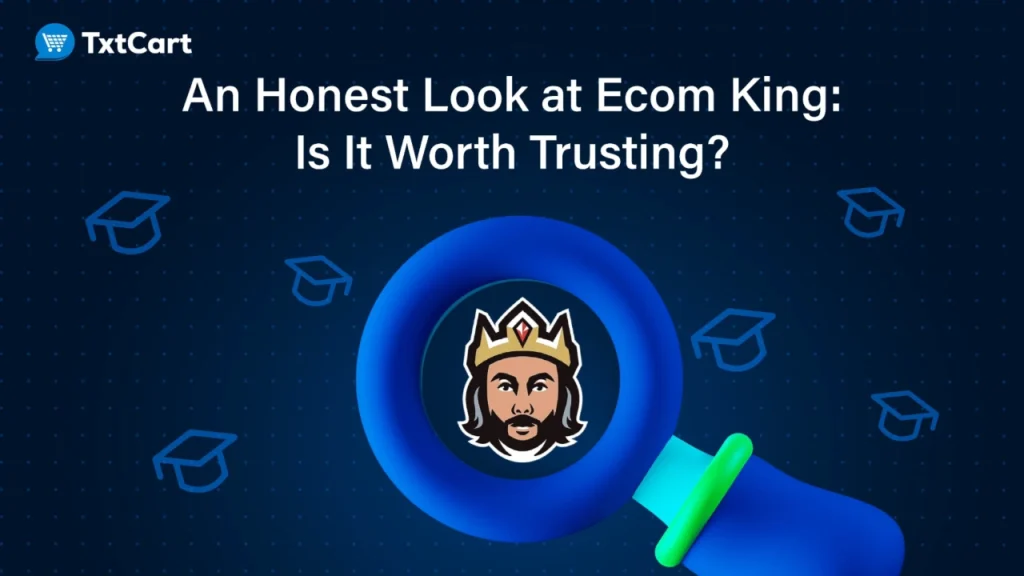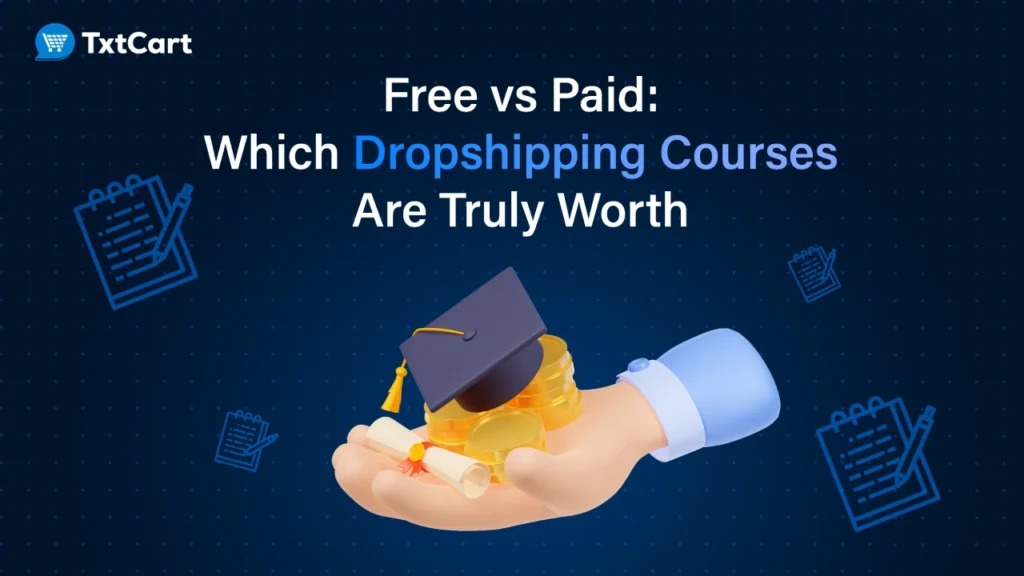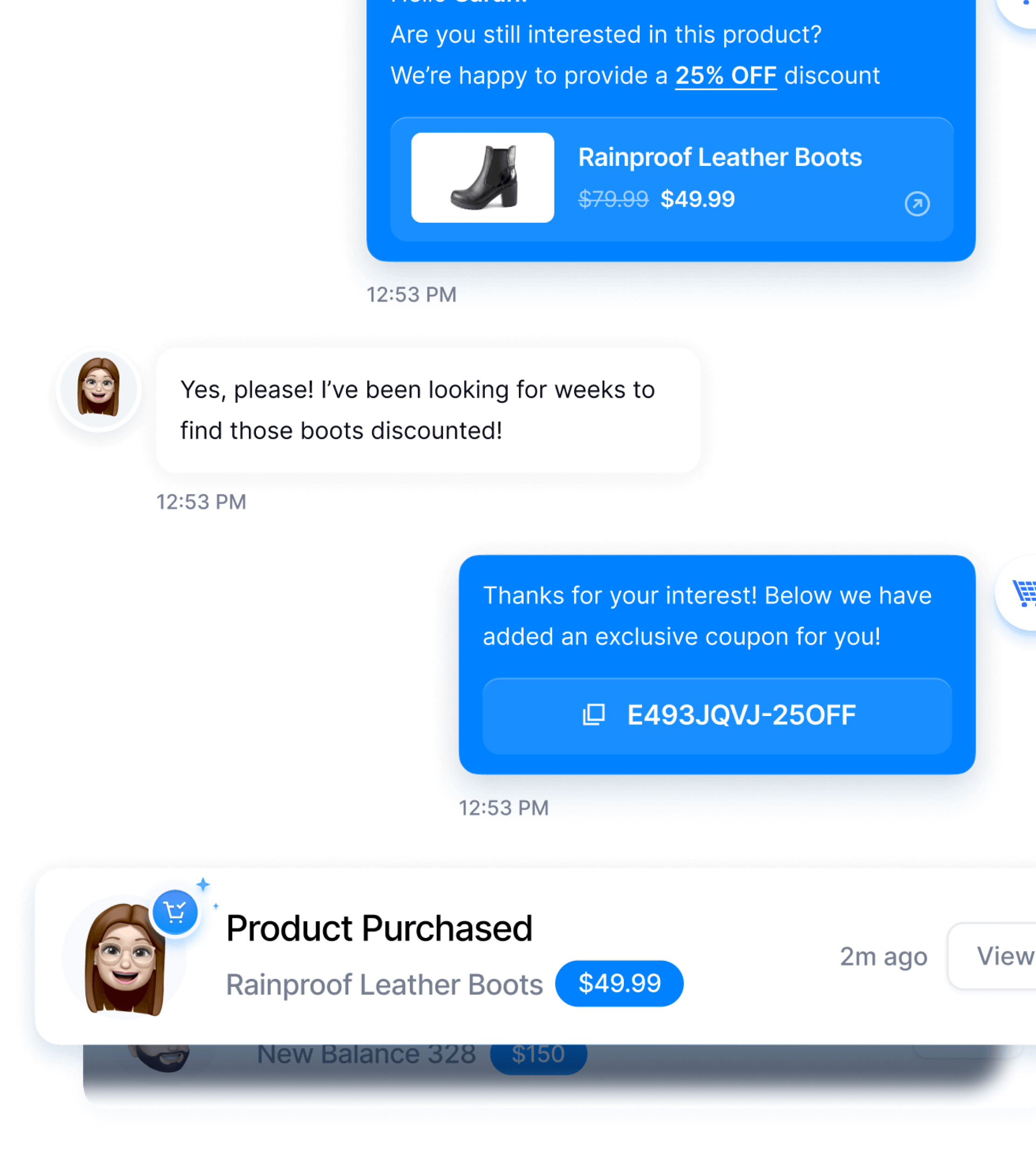SMS because of its high open and engagement rates has proven to be an effective communication channel for businesses. And this holds true for retail too. In this blog, we have discussed retail SMS marketing specifically. Learn everything about it, strategies, benefits, best practices, and examples.
What is retail SMS marketing?
Retail SMS marketing is a strategy where retail businesses use text messages to communicate with customers. This approach involves sending promotional offers, updates, and personalized messages directly to shoppers’ mobile phones.
Recommended read: Ultimate Beginners Guide to Shopify SMS Marketing 2025
What are the benefits of retail SMS marketing?
Some of the major benefits of retail SMS marketing are:
1. Long-lasting relationships with customers
With personalized messages, for example, a retailer can incorporate customized promotions, birthday wishes, and loyalty rewards, making a customer feel highly regarded and special. The fundamental principle is that of satisfying and retaining a customer, which leads to repeated visits and choosing to make repeat purchases.
By consistently delivering relevant and engaging content, retailers earn the trust of their customers and create brand advocates in the process, which indirectly builds a strong and emotional connection with their audience.
2. Communicate with customers on their preferred platforms
With high open rates and the immediacy of text messages, the message delivered is seen and read almost immediately. Direct access to the customer’s most-used means of communication allows the customer to receive timely updates about ongoing promotions, sales, or new product arrivals.
That’s why reaching customers where they already spend a lot of their time is becoming increasingly important to retailers seeking to build engagement and prompt more direct action than many other marketing channels.
3. Simplify real-time communication
Real-time communication is much more accessible with retail SMS marketing. Now, if a person is a customer or a registered user, then a retailer can send all kinds of messages to every customer instantly. It may be some flash sale announcement, confirmation of an appointment, or real-time support being provided to the customer.
The main thing is that this type of immediacy is most critical if the message is time-sensitive, so the customer who receives such kind of message can quickly act upon it.
4. Enhance customer engagement
Retail SMS marketing greatly enhances interaction and customer loyalty because it is a direct, personalized form of communication. Since text messages are immediate and usually read within minutes, they serve as a great way of notifying customers about new arrivals, any special events, or any exclusive offer the store provides. With personalized messages, the customers will feel respect and value, which results in an emotional connection towards the brand.
5. Is cost-effective
SMS marketing, in bulk SMS sending, is relatively very pocket-friendly. What’s also great with SMS campaigns is their simplicity makes setting up and management much quicker, with fewer resources—just perfect for small and medium-sized retailers that wish to maximize what they get out of their meager marketing budgets.
6. Increases sales
The retailers can offer customized offers depending on the data and customer’s preferences. Automatically, they would buy the product range from you if they feel that the offer sent out by you was explicitly for them.
Key strategies for retail SMS marketing
Some of the significant SMS marketing for retail include:
1. Personalized promotions
Personalized promotions involve tailoring messages to individual customers based on their purchase history, preferences, and behavior. This strategy enhances the relevance and effectiveness of the message, making customers feel valued and increasing the likelihood of engagement and conversion.
Example: “Hi [Customer Name], enjoy 20% off on your favorite jeans at [Store Name]! Use code JEANS20 at checkout. Valid until Sunday. Shop now: [short link]”
Recommended read: What is SMS Personalization – Key Tips and Advice (2025)
2. Time-sensitive offers
Time-sensitive offers create urgency, encouraging customers to act quickly to take advantage of limited-time deals. These messages can drive immediate traffic and sales, especially during special promotions or flash sales.
Example: “Flash Sale! Get 30% off all electronics for the next 24 hours only at [Store Name]. Hurry, don’t miss out! Shop now: [short link]”
3. Loyalty program updates
Keeping customers informed about their loyalty program status, rewards, and special perks can enhance their connection to the brand and encourage continued engagement. Regular updates ensure customers are aware of their benefits and motivated to earn more rewards.
Example: “Hi [Customer Name], you’ve earned 150 points in our loyalty program! Redeem your points for exclusive discounts. Check your rewards: [short link]”
4. Segmentation and targeting
Segmentation and targeting are crucial in SMS campaigns to ensure messages are relevant and engaging for different customer groups. When you segment customers based on demographics, purchase history, and behavior, you can create highly targeted campaigns that resonate with specific audiences.
This approach not only improves the effectiveness of the messages but also enhances customer satisfaction by delivering content that meets their interests and needs.
Example: “Exclusive Offer for Our VIP Members! Enjoy an extra 10% off your next purchase. Thank you for being a loyal customer. Use code VIP10 at checkout: [short link]”
Best practices for retail SMS marketing
Here are some important best practices for retail SMS marketing:
1. Obtain explicit consent
Ensure you have explicit consent from customers before sending them marketing messages via SMS. This can be done through opt-in forms during the checkout process, at the point of sale, or through dedicated SMS opt-in campaigns.
2. Maintain message frequency
Started and not sending enough messages Or worse-bombarding your customers? Ensure you keep your volume at an acceptable frequency ideally set by the audience preference and the type of promotions you are sending. Twice a week is the sweet spot for most retail SMS campaigns.
3. Ensure message relevance
As Customer preferences, purchase history, and behavior come into play, personalized SMS messages. Segment your audiences well enough that you can deliver content and offers that resonate with each sector. A generic text message may trigger the possibility of going to the trash or spam.
4. Craft compelling messages
Though SMS messages are short, they must be clear and compelling. They should use exciting language and catch the attention of the reader. The key benefits of your offer are what it should highlight. At times, it must create urgency also. Emojis and multimedia elements can make it more engaging.
5. Use clear calls-to-action (CTAs)
Every message should have a clear and actionable CTA. Whether it is to visit your store, redeem a code online, enter a competition, or learn more about a new product, the action is wanted and is easily actionable.
Examples of successful retail SMS marketing campaigns
Here are a couple of retail SMS marketing examples that have achieved success:
1. Organi
Organi Grow Hair specializes in organic, vegan, and all-natural hair care products, catering to all ages and hair types. They used 2-way conversational SMS to increase conversions and reply rates.

They used two-way SMS marketing to answer customer questions which enhanced their relationship with their customers.
Results
- Cart Recovery generated an additional $25K in recovered checkout revenue monthly.
- Organi saw reply rates of 42% and recovery rates of 60%, establishing a new standard.
- Conversational campaigns led to over 9,500 orders, with an average purchase value of $96.26.
2. Toroe Performance Eyewear
Toroe used abandoned checkout SMS flows to boost sales and revenue. They sent real-time, empathic, friendly, and personalized text conversations, effectively engaging customers and driving conversions.
Results
- Revenue lift of over $6,000 within weeks
- The organic and impactful conversations led to a 50% reply rate at scale
- 2/3 of the customers who replied made a purchase
- Over 800 orders were recovered in just 8 months, generating well over $60K in additional revenue for Toroe.
Recommended read: Best SMS Marketing Examples To Supercharge Your Marketing Campaigns
Tools for retail SMS marketing
There are many tools available for SMS marketing and hence it is important to find the ones that are of value.
Some of the non-negotiable features to look for in SMS marketing tools are
- Compliance and Consent Management
- Segmentation and Personalization
- Automation and Scheduled Campaigns
- Analytics and Reporting
- Integration and API Support
- Two-Way Communication
- Message Templates and A/B Testing
TxtCart is one such tool that you can trust as it offers all the important features for creating effective retail SMS campaigns. Txtcart is easy to get started with a simple setup process.
TxtCart also gives you an easy-to-use reporting dashboard. You can view the current status of the campaign(s), the number of recipients it sent to as well as campaign-specific reply rate, CTR (click-through rate), revenue generated as well as approx ROI (Return on Investment).
Conclusion
TxtCart has transformed PupSocks’ marketing strategy, particularly during holiday seasons, with its 2-way SMS marketing and abandoned cart recovery. The tool facilitated $140,362 in SMS-attributed revenue, boasting a 25.3x ROI and an 8% increase in reply rates.
This personalized approach led to meaningful conversations, happier customers, and substantial business growth for PupSocks.
Book a demo with us or try out our risk-free 14-day free trial!
